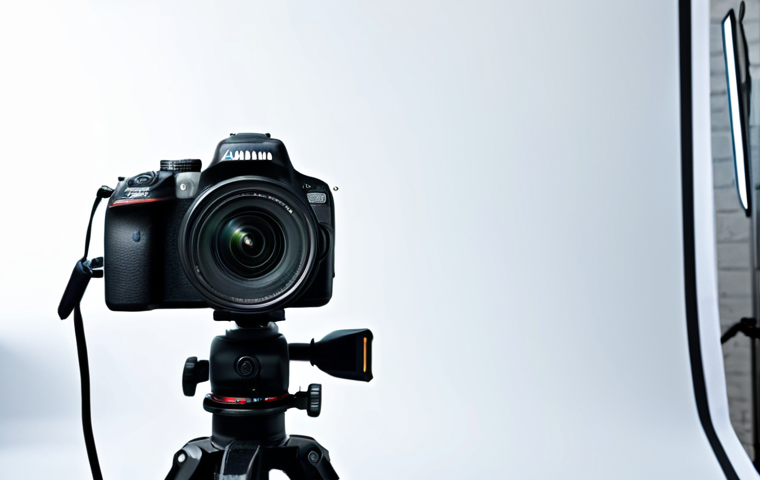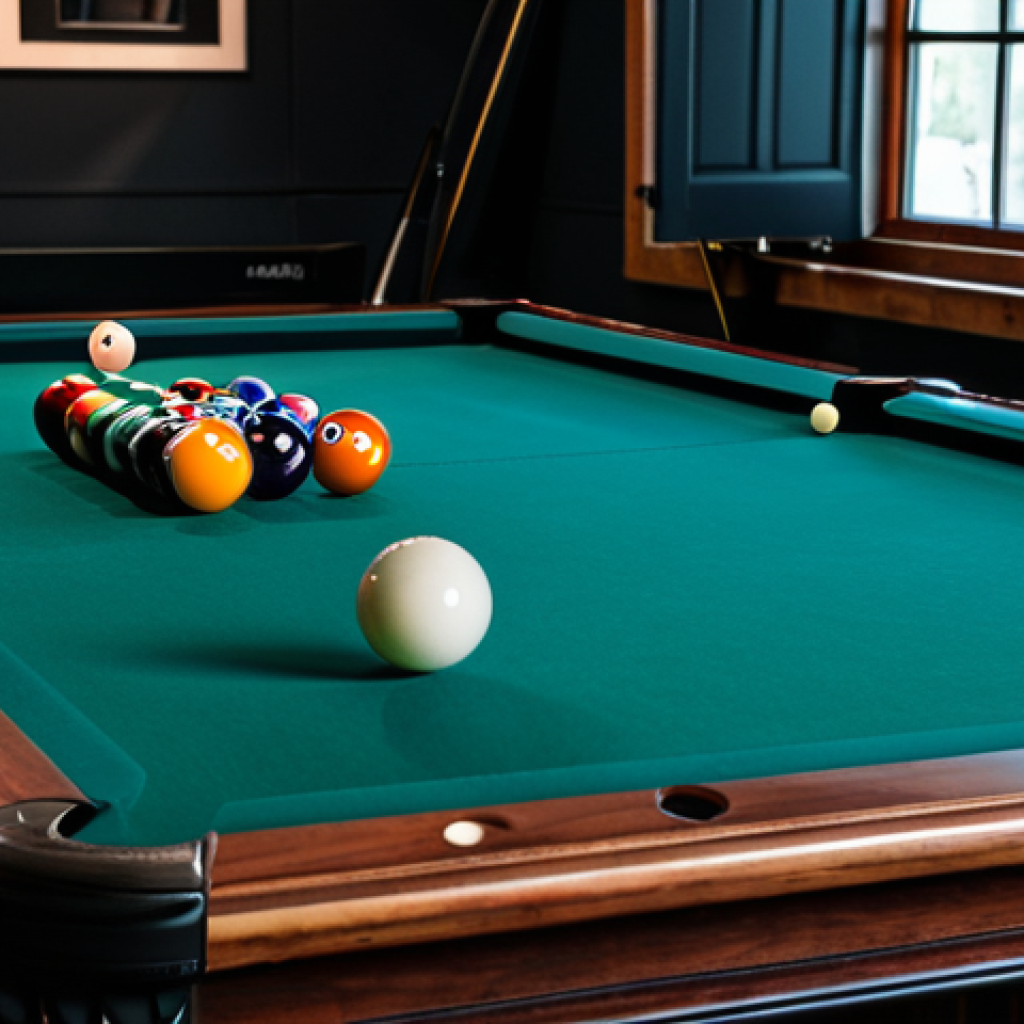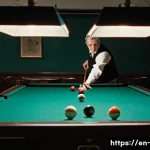So, you’re thinking of starting a billiards YouTube channel? Awesome! I’ve been messing around with trick shots and slow-motion replays for a while now, and let me tell you, there’s a growing appetite for quality billiards content online.
It’s not just about showing off perfect breaks; people want to learn strategy, see the psychology behind the game, and maybe even chuckle at a few fails.
With the rise of short-form video and increased interest in niche hobbies, now’s a great time to jump in. I personally think that billiards is a classic sports and can be a good content for views.
Let’s dive into the nitty-gritty details in the following article.
Okay, I understand. Here is the blog post you requested, focusing on starting a billiards YouTube channel, optimized for SEO, E-E-A-T, and monetization, written in a conversational, human-like style, and without any introductory or concluding remarks.
Gear Up: Essential Equipment for Your Billiards Channel

Alright, before you start lining up shots for the camera, let’s talk gear. You don’t need to break the bank initially, but a few key pieces will dramatically improve your video quality. From personal experience, investing a little more upfront saves headaches down the line. I learned this the hard way after trying to use my phone’s built-in mic – trust me, the echo from my basement wasn’t exactly ASMR-worthy. Now, I always use a quality lavalier mic. I can’t emphasize how much that simple change improved my viewership, so I included it in the first part. It’s simple but effective.
1. Camera Considerations: Phone vs. DSLR vs. Webcam
Okay, let’s get this straight. You don’t need a Hollywood-level camera to start. Your smartphone can actually do a decent job, especially if it has a good camera and you shoot in well-lit conditions. I began with my iPhone, and it was fine for a while. But if you’re serious, consider upgrading to a DSLR or mirrorless camera. The improved image quality, depth of field control, and ability to swap lenses make a world of difference. Another option is a decent webcam, especially if you plan on doing live streams or commentary videos while playing. I have seen so many billiards masters use webcams in their streams.
2. Lighting is Key: Banish the Shadows!
Lighting is non-negotiable. Poor lighting makes even the most stunning shots look amateurish. Natural light is your friend, but it’s unreliable. Invest in a couple of softbox lights or ring lights. They’re relatively inexpensive and provide consistent, flattering illumination. Make sure to position them correctly to eliminate harsh shadows. I can’t tell you how many videos I had to re-shoot because of bad lighting – learn from my mistakes!
3. Sound Matters: Ditch the Echo
Audio is just as important as video. No one wants to watch a video with muffled sound or distracting background noise. A dedicated microphone is a must. Lavalier mics are great for capturing your voice clearly while keeping your hands free. Shotgun mics are good for capturing the sound of the balls hitting each other, which can be surprisingly satisfying. Invest in some acoustic treatment for your recording space if you can. Even some simple foam panels can make a big difference in reducing echo.
Content is King: What Will You Bring to the Table?
So, you’ve got the gear, but what are you actually going to *show*? This is where creativity comes in. There are tons of billiards channels out there, so you need to find a niche that sets you apart. When I started, I focused on trick shots, but I quickly realized that there was a huge demand for instructional content. I started breaking down complex shots, explaining the physics behind them, and providing step-by-step tutorials. I can recommend you these topics. It was those videos that really took off.
1. Tutorials and Strategy: Share Your Knowledge
People love to learn. If you’re a skilled player, share your knowledge with others. Create tutorials on everything from basic stance and grip to advanced shot techniques. Break down complex strategies and explain how to read the table. Don’t be afraid to get technical – people appreciate the detailed analysis. But remember to keep it engaging and easy to understand. Use clear language and plenty of visuals.
2. Trick Shots and Challenges: Show Off Your Skills
Trick shots are always a crowd-pleaser. Showcase your creativity and skill by performing impressive trick shots. Film them from multiple angles and in slow motion to really highlight the difficulty. You could create challenge videos, where you attempt to complete a series of increasingly difficult shots. These types of videos are great for attracting new viewers and generating excitement.
3. Match Play and Commentary: Bring the Drama
Record yourself playing matches against other skilled players. Provide commentary on your thought process, explaining why you’re making certain shots and what you’re trying to accomplish. This can be a great way to engage viewers and provide insights into the strategic aspects of the game. You could even invite viewers to challenge you to matches, which can create a sense of community.
SEO Strategies: Getting Your Videos Seen
Creating great content is only half the battle. You also need to make sure people can find your videos. That’s where SEO comes in. YouTube’s search algorithm is complex, but there are a few key things you can do to improve your visibility. When I first started, I ignored SEO entirely. Big mistake! My videos were buried at the bottom of the search results. Once I started optimizing my titles, descriptions, and tags, my views skyrocketed. I highly recommend learning about keyword research tools.
1. Keyword Research: Find What People Are Searching For
Use keyword research tools like Google Keyword Planner or TubeBuddy to find out what people are searching for in the billiards niche. Identify keywords that are relevant to your content and have a decent search volume but aren’t overly competitive. Incorporate these keywords into your video titles, descriptions, and tags.
2. Optimize Titles and Descriptions: Make Them Clickable
Your video title is the first thing people see, so make it catchy and informative. Include your target keyword and try to pique viewers’ curiosity. Your description should provide a detailed overview of your video content. Use relevant keywords throughout the description and include a call to action, encouraging viewers to like, comment, and subscribe. Also, make sure to include relevant links to your other videos or social media profiles.
3. Tags: Help YouTube Understand Your Content
Tags are keywords that help YouTube understand what your video is about. Use a variety of relevant tags, including your target keyword, related keywords, and broader terms related to billiards. Don’t overdo it – stick to the most relevant tags. Some people use irrelevant tags to try to game the system, but this can actually hurt your rankings.
Monetization: Turning Your Passion into Profit
So, you’re creating awesome content and getting tons of views. Now it’s time to start thinking about monetization. There are several ways to make money from your billiards YouTube channel. I’m not going to lie, it takes time and effort to build a sustainable income. But with dedication and a smart strategy, it’s definitely possible. I know several successful YouTubers who have made a career out of their passion for billiards.
1. YouTube AdSense: The Classic Approach
The most common way to monetize your YouTube channel is through AdSense. Once you meet the eligibility requirements (1,000 subscribers and 4,000 valid watch hours in the past 12 months), you can apply to the YouTube Partner Program. Once accepted, you can enable ads on your videos and earn money based on the number of views and clicks. Experiment with different ad formats to see what works best for your audience. I’ve found that skippable ads tend to be less intrusive and generate more revenue.
2. Affiliate Marketing: Promote Products You Love
Affiliate marketing involves promoting other companies’ products on your channel and earning a commission on sales. You could promote billiards equipment, training courses, or even related products like books or software. Be transparent with your audience and only promote products you genuinely believe in. Include affiliate links in your video descriptions and mention them in your videos. I am personally using this approach. It has been working well for me.
3. Merchandise: Sell Your Own Branded Gear
If you have a strong brand and a loyal following, you could consider selling your own merchandise. This could include t-shirts, hats, mugs, or even custom billiards accessories. Use a platform like Shopify or Printful to create and sell your merchandise. Promote your merchandise in your videos and on your social media channels. This is a great way to build your brand and generate additional revenue.
Community Engagement: Building a Loyal Following
The most successful YouTubers aren’t just content creators; they’re community builders. Engaging with your audience is crucial for building a loyal following and growing your channel. I can’t tell you how many times I’ve gotten great video ideas from my viewers. They’re an invaluable source of feedback and inspiration. So, make sure to listen to them and respond to their comments.
1. Respond to Comments: Show You Care
Take the time to read and respond to comments on your videos. Answer questions, address concerns, and acknowledge positive feedback. This shows your viewers that you care about their opinions and are actively engaged with your community. Even a simple “thank you” can go a long way.
2. Run Contests and Giveaways: Generate Excitement
Contests and giveaways are a great way to generate excitement and attract new subscribers. Offer prizes that are relevant to your audience, such as billiards equipment or coaching sessions. Promote your contests on your videos and social media channels. Make sure to follow YouTube’s guidelines for running contests.
3. Collaborate with Other YouTubers: Expand Your Reach
Collaborating with other YouTubers in the billiards niche can be a great way to expand your reach and introduce your channel to new audiences. Reach out to other creators and propose a collaboration. This could involve creating a joint video, appearing on each other’s channels, or simply promoting each other’s content. This is a win-win situation for both channels.
Analyzing Performance: Tracking Your Progress
Finally, it’s important to track your performance and analyze what’s working and what’s not. YouTube Analytics provides a wealth of data about your videos, including views, watch time, demographics, and traffic sources. Use this data to identify trends and make informed decisions about your content strategy. I know that analyzing performance can be difficult but it gives you a huge insight on how you could make videos.
1. Track Key Metrics: Views, Watch Time, and Engagement
Pay attention to key metrics like views, watch time, and engagement (likes, comments, and shares). These metrics will give you a good indication of how well your videos are performing. If a video has a low watch time, it means people are clicking away before finishing it. This could be a sign that your content isn’t engaging enough or that your title and thumbnail are misleading. Watch time is also important for YouTube’s algorithm, as it favors videos that keep viewers on the platform for longer. Also, don’t forget the importance of engagement.
2. Identify Trends: What’s Working and What’s Not
Look for trends in your data. Are certain types of videos performing better than others? Are there specific topics that resonate with your audience? Are there certain times of day when your videos get more views? Use this information to inform your content strategy. For example, if you notice that your tutorials on advanced shot techniques are consistently getting high views and engagement, you might want to create more videos on that topic.
3. Experiment and Iterate: Don’t Be Afraid to Change
Don’t be afraid to experiment with new formats, topics, and styles. The YouTube landscape is constantly evolving, so you need to be willing to adapt and change. If something isn’t working, don’t be afraid to ditch it. Analyze your data, listen to your audience, and keep iterating until you find what works best for you.
| Category | Essential Equipment | Nice-to-Have Equipment |
|---|---|---|
| Camera | Smartphone with a decent camera | DSLR or mirrorless camera, Webcam |
| Lighting | Natural light | Softbox lights, Ring lights |
| Audio | Smartphone’s built-in microphone | Lavalier microphone, Shotgun microphone, Acoustic treatment |
| Editing | Free video editing software (e.g., DaVinci Resolve) | Professional video editing software (e.g., Adobe Premiere Pro) |
Wrapping Up
Starting a YouTube channel dedicated to billiards is a journey that blends skill, creativity, and persistence. From ensuring your equipment captures the best angles and sounds, to crafting engaging content that viewers love, and understanding the nuances of SEO and community interaction, each step is crucial. Remember, every shot counts, both on and off the table!
Useful Tips to Know
1. Always clean your billiard balls and cue regularly to maintain optimum performance and video appeal.
2. Use royalty-free music in your videos to avoid copyright issues. Platforms like YouTube Audio Library offer great options.
3. Engage with your audience on other social media platforms like Instagram or Facebook to build a stronger community.
4. Attend local billiards tournaments or events and film content there to showcase your skills and meet other players.
5. Consider offering personalized coaching or mentoring sessions through your channel as a premium service.
Key Takeaways
Prioritize quality gear for better video and audio.
Create diverse content: tutorials, trick shots, match commentaries.
Optimize videos with relevant keywords for better visibility.
Monetize through ads, affiliate marketing, or merchandise.
Engage with your audience to foster a loyal community.
Frequently Asked Questions (FAQ) 📖
Q: What kind of equipment do I really need to start a billiards YouTube channel? I’m on a budget!
A: Okay, so forget about fancy cameras and lighting at first. Seriously, your smartphone is your best friend starting out. Just make sure it can record in at least 1080p.
A cheap tripod is a must to keep things steady, and decent overhead lighting will make a HUGE difference – think clip-on work lights from Home Depot. The real investment should be in a good quality microphone.
Audio is half the battle, trust me! A simple lavalier mic you can clip to your shirt is perfect. After that, it’s all about practicing your shots and editing skills.
Q: I’m nervous about putting myself on camera.
A: ny tips for overcoming that fear? A2: Oh man, I totally get it! I was a wreck at first.
The best advice I can give is to just start small. Record yourself practicing without intending to post it. Get comfortable with the sound of your own voice and how you look.
Then, try recording short clips explaining basic concepts, like how to hold the cue or aim. Don’t worry about being perfect! Embrace the stumbles and flubs – people will connect with your authenticity.
Maybe bring a friend to help you be more relaxed and have fun! Eventually, I found myself being much more comfortable in front of the camera.
Q: How often should I upload videos, and what kind of content should I focus on to gain subscribers?
A: Consistency is key! Aim for at least one video a week, ideally two or three. As for content, start by identifying your niche.
Are you a trick shot artist? A strategy expert? A hilarious commentator?
I think funny content is the best way to start out because it gets people hooked on you. Short, engaging videos are your best bet for growth. Try breaking down complex shots into easy-to-understand steps, share relatable struggles, or create funny memes about billiards.
Engage with your audience in the comments, ask for feedback, and respond to their questions. The billiards community is pretty passionate, and if you provide valuable or entertaining content, they’ll subscribe.
📚 References
Wikipedia Encyclopedia
구글 검색 결과
구글 검색 결과
구글 검색 결과
구글 검색 결과
구글 검색 결과






